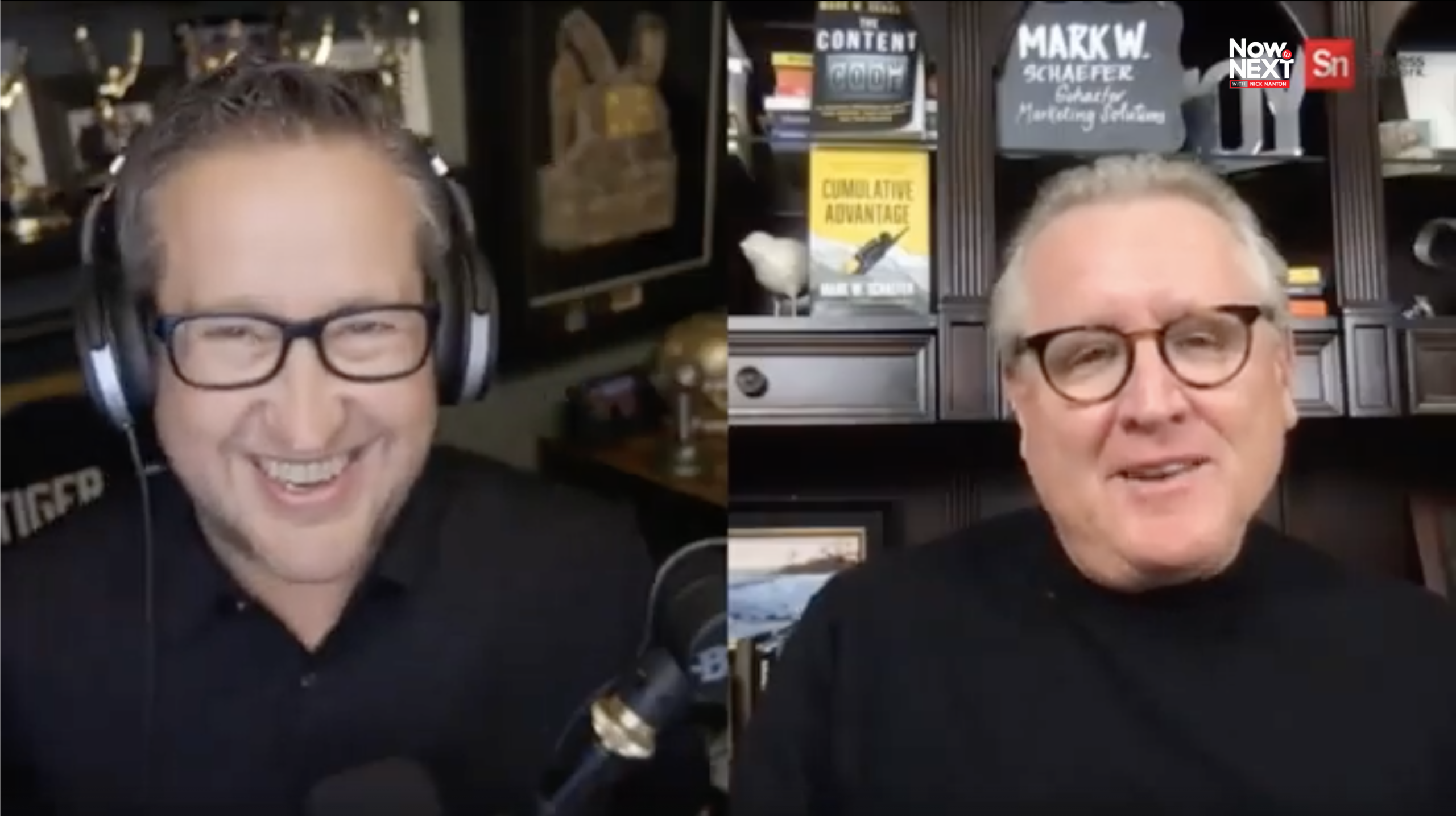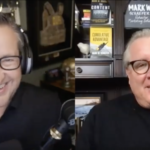Mark Schaefer is a globally-recognized author, speaker, podcaster, and business consultant. He has advanced degrees in marketing and organizational development, holds seven patents, and is a faculty member of the graduate studies program at Rutgers University. His blog, GROW, and podcast The Marketing Companion are among the top-rated marketing resources in the field.
Mark is the best-selling author of nine books, including the very first book published on influence marketing. His new book, Cumulative Advantage, is a story-rich guidebook to help people build unstoppable momentum and rise above obstacles. Mark joined my Now to Next podcast to share nuggets from Cumulative Advantage.
Momentum Can Begin With Something Random
Mark’s storied career includes working with Adidas, J&J, Dell, AT&T, the U.S. Air Force, and the U.K. government. Originally, Mark was working on a book about strategy that was going to be his ninth book, and through a random interaction with a friend in a hotel lobby, he learned that the concept of cumulative advantage hadn’t really been applied to the business world.
It was in that random moment that a shift occurred, and Cumulative Advantage was born. Most success, most momentum begins with something random shared Mark. You just have to be willing to follow that random spark of inspiration all the way down the rabbit hole.
Small Advantages Build Over Time
In 1965, sociologist Derek Price published the first essay on “cumulative advantage.” He and other sociologists mapped how small advantages in economic status, health, or status become significant over time. Two people may begin close to the same spot, but a slight difference in opportunity can result, 30 years later, in a considerable divergence. One may be wealthy while the other is struggling. One may be healthy while the other takes an array of medications.
Mark’s curiosity was piqued by the idea that some small advantages in life can set into motion a momentum that builds and builds and builds to the point where we start separating ourselves from our competition. He made it his mission to figure out two things. First, what are the countervailing processes that might thwart a person’s momentum? Second, if people don’t have advantages, what are some of the things you do to create your own momentum?
The answers he found became the heart of his book.
The Pursuit of Curiosity
In my work as a documentary filmmaker, I’ve noticed many of the people I’ve met at the top of their profession are exceptionally curious. Mark once asked Walter Isaacson, who wrote books on Steve Jobs, Einstein, and da Vinci (which we’ll touch on in a minute), “What makes a genius?”
Walter identified two things. One is being able to recognize patterns. The other is a pursuit of curiosity. Not just being curious, but the pursuit of curiosity leads to innovation and breakthroughs.
The Matthew Effect
As described in Mark’s book, the Matthew Effect was researched and described in the 1960s by a Columbia University professor named Robert Merton. The theory, in part, arose from his experience succeeding against all odds. While the name, “The Matthew Effect” derives from a verse in the New Testament (Matthew 25:29) which reads, “For to everyone who has, more shall be given, and he will have an abundance; but from the one who does not have, even what he does have shall be taken away.”
Growing up, Merton’s family had emigrated from Russia to the slums of South Philadelphia. Even though his family was poor and could barely get enough to eat, he lived near neighborhoods with mansions and was exposed to a larger picture of life.
The city was rich with cultural and educational venues, including the Andrew Carnegie Library, the Academy of Music, the Central Library, and the Museum of Arts. Merton took advantage of these resources and earned a scholarship to Temple University before completing his Ph.D. at Harvard.
Throughout his career, Merton noticed that once someone starts getting an advantage, they keep getting more opportunities and it’s not necessarily earned, but the product of a mounting momentum. He was able to back up his observations with research in a multitude of fields from athletes to Nobel prize winners.
The Matthew Effect is sometimes summarized as, “The rich get richer, and the poor get poorer.”
Your da Vinci Team
If you are not where you want to be at the moment, an initial advantage can come from anywhere. The key is to pursue your curiosity.
In his biography of Leonardo da Vinci, Walter Isaacson observed that many of da Vinci’s most significant works were collaborative. He painted them, but the development of the idea unfolded over time and across multiple conversations. His famous drawing of the Vitruvian Man began with friends discussing the Roman philosopher Vitruvius, who theorized that man could fit inside a square and a circle.
Da Vinci got curious and asked another friend about it. The friend did a quick sketch. The conversation and drawing emerged into one of da Vinci’s best-known works of art.
Even for someone like da Vinci, his most famous works were a collaboration. Having people to debate and bounce ideas off makes them richer, fuller, and more interesting.
Research in psychology shows that by about age 15, our mental frameworks are pretty much formed. From that point forward, we sort of approach the world in a certain way. A diversity of perspectives cultivates true breakthrough thinking.
At a Fortune 100 company, Mark was charged with helping the team come up with new ideas. One process was called “brainwriting.” Each contributor came in with a big idea that they wrote on sheets of paper on the wall. Then, they would go two steps to the left and expand on that person’s vision, three steps to the right and comment on that person’s, and finally circle one idea they thought was the best. By the end of this collaborative process, most people selected someone else’s idea as the most promising.
Your da Vinci team are people who help you develop your ideas and clear the road forward.
Using Cumulative Advantage to Build a Better World
Mark is an outstanding storyteller, and we only scratched the surface of the wisdom and stories in his book, but we wrapped up our podcast conversation with a question. “How do we apply Cumulative Advantage to the world?”
The beginning of momentum is an initial advantage, an initial spark. That initial spark can come from anywhere, including the people around us. We can create momentum in other people’s lives by sending the elevator back down and creating sparks for others.
Some people think they have to wait until the end of their journey to assist or support others, but the time to begin building up others is while you’re on the journey. Mentoring or offering a spark to someone else propels us to the next level.
All of us can create sparks for others. The longest journey starts with the first step. Small opportunities, ideas, and encouraging words to others can and do have a significant ripple effect in the world. As a reader of my blog, I invite you to start asking yourself, “Have I done one thing today that sends a spark to fuel the momentum or create an opportunity for others?”
I also highly encourage you to check out Cumulative Advantage and discover how your decisions today can grow into significant successes over time. And, while you’re at it check out the full episode of “Now to Next” on YouTube or your favorite podcasting platform. And, as always, you can direct any questions you have to me too.

